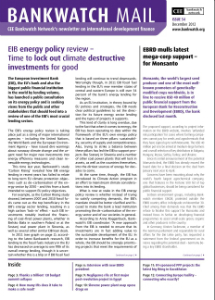Unsustainable energy future for EU neighbourhood region challenged

Bankwatch Mail | 14 December 2012
Europe’s neighbouring countries, from the Western Balkans to Ukraine, are intent on pursuing unsustainable energy futures that rely heavily on coal and nuclear. The draft energy strategy of the European Energy Community, recently open for public comments, is no big departure from the national plans, as Bankwatch found out when compiling comments to the draft – and, moreover, this reliance on coal and nuclear energy could end up receiving EU support and financing.

This article is from Issue 54 of our quarterly newsletter Bankwatch Mail
Browse all articles on the right
Bankwatch’s principal concerns with the draft Regional Energy Strategy include:
Read more
Bankwatch’s full comments on the draft Regional Energy Strategy are available for download as pdf.
- The draft focuses too exclusively on short-term goals. It needs to be expanded to include the 2050 perspective and clear greenhouse gas emissions reductions targets are needed in line with the EU’s goals to reduce GHGs by 80-95 percent by 2050.
- All three scenarios outlined in the draft strategy entail growth in CO2 emissions until at least 2030, in serious conflict with the EU’s 2050 decarbonisation goals.
- The energy efficiency and renewable energy targets outlined are much too low, and the energy demand growth predictions too high to be sustainable.
- Demand-side energy efficiency has huge potential in the region but is hardly given consideration in the strategy, in spite of the possibilities it offers to reduce investment costs in generation and transmission.
- As it will be extremely challenging for the region to meet its own energy needs as outlined by the strategy, the Energy Community should not support projects primarily aimed at the export of electricity to the EU.
- The criteria outlined for selecting priority projects automatically disadvantage renewable energy and energy efficiency by concentrating on cross-border projects, and enable the selection of projects which conflict with decarbonisation goals.
Never miss an update
We expose the risks of international public finance and bring critical updates from the ground. We believe that the billions of public money should work for people and the environment.
STAY INFORMED
